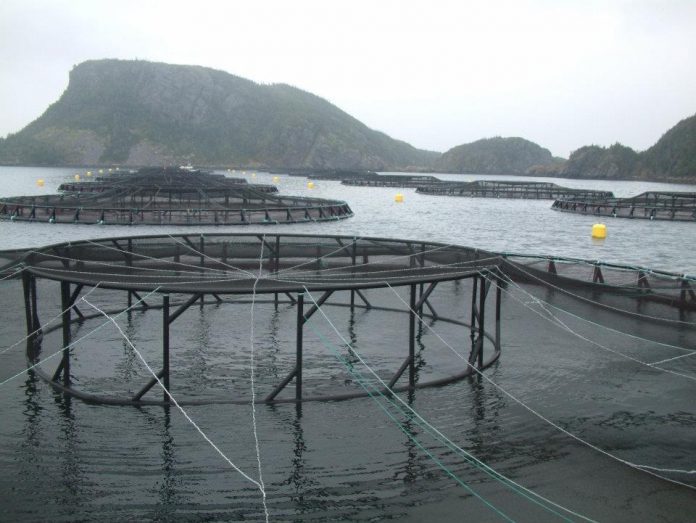Is Newfoundland really ready to expand?
SalmonBusiness talked to aquaculture scientist Cyr Couturier who is Chair of aquaculture programs at Memorial University, Marine Institute of Memorial University (MUN) on the the future of salmon farming in Atlantic Canada.
Salmon farming in Newfoundland, Canada, has taken a beating over the past few months. The aftermath of Northern Harvest’s mass mortality resulted in the salmon farmer losing its affected licences on top of all millions of dead fish it lost.
Final frontiers
However, Atlantic Canada has thousands of miles of cool coastline with optimal conditions for salmon farming. And the region is aiming to double production in just two years, as outlined the government’s roadmap Through The Way Forward for Newfoundland and Labrador, with the provincial government setting a 50,000 tonnes salmon production target in just two years.
Salmon farmers such as Mowi, Grieg NL and Indian Head Hatchery (which provides smolt to sea cages of the Northern Harvest Sea Farms) are all currently planning boosting production in the region or setting up new sites. But can the region cope?

Marine biologist Cyr Couturier has decades of knowledge on aquaculture in the region he resides. Last year he wrote a chapter in the book “Food Futures” by C. Keske, where he argued that many of the bottlenecks to production had been solved by close partnership among researchers at MUN over the past twenty years.
What do you think that salmon farmers have to get right, if they are to avoid issues such as the costly mortalities that Northern Harvest just went through?
“As far as NL is concerned, you ask a tough question. I can not tell you what the projections are, except for the what the industry association has come up with the existing and future companies along with the government. I think the Going Forward document planned to about 50,000 tonnes by 2022, from the plans inception in in 2017-2018,” he said.
Downward trend
Cyr Couturier explained that the trend has been downward in 2018, 2019, and likely will be in 2020 and added that the target may be “unrealistic” owing to things like unexpected mass mortalities.
The aquaculture scientist – whose areas of research span a wide range of topics, including enhanced farm production, environmental management and aquaculture interactions – was optimistic about the sectors ability to grow.
“Make no mistake, the will is there however to invest and grow the sector to at least 50,000 tonnes per annum, but if was to prognosticate, I would say it will be at least until 2025, perhaps longer before adjustments in farming practices are made to reach this target,” he said.
Artificial intelligence
Couturier also had faith in salmon farmers to overcome current obstacles to production combined with the rise of artificial intelligence.
“I think the various companies have figured out what to do to avoid mass mortalities of the type mentioned below, and it involves deeper nets, proper infrastructure to deal with larger, bigger, and more rigorous nets and standards (in fact it has been legislated in NL from what I can discern), including aeration systems to mitigate against environmental damage by plankton blooms, or low DO, or high temperatures, or combinations thereof. With AI now inserting itself into the equation, I would predict better management of fish health, feeding, and fish behavior to be routine within the not too distant future.”
Invest in smart tech
AI is big business in salmon farming. Ventures such as AKVA and Observe Technologies, who worked together to produce a new software uses AI to help feed fish more efficiently. But Couturier said he believes that those who do not invest in smart tech do so at their own peril.
“I suspect this will be the modus operandi for net pen farming of salmon, if not other larger scale finfish cultivation in climate impacted zones, including Scotland, Norway, Chile and Canada. The tools really are available for all of this right now, and I think they will need to invest into these technologies and operating practices to avoid catastrophic losses. The fishes’ welfare must come first, after all, these are animal welfare issues, and no farmer really wants to have his or her animals suffer or die, or escape from spurious environmental events, ” he said.

“So, I think smart farming is the order of the day going forward. If I was to predict the future, I would say that those that do not shift their paradigms and invest in smart technology and husbandry practices, will risk future investment, risk future access to public waters, risk losing more crops, and risk losing public trust,” added Couturier.
How do you get trust back?
“Don’t get me wrong, in these challenging times of climate change, public scrutiny, and global “oversight”, it behooves those that wish to produce some of the most carbon friendly, delicious and nutritious foods around to get sustainable aquaculture right, and be transparent about it.
“And, of course they will need investment from the science sector to help them find the solutions for food production in the future. Governments that invest in helping this already “green” food activity, become even more green will be key to their success as well.”

